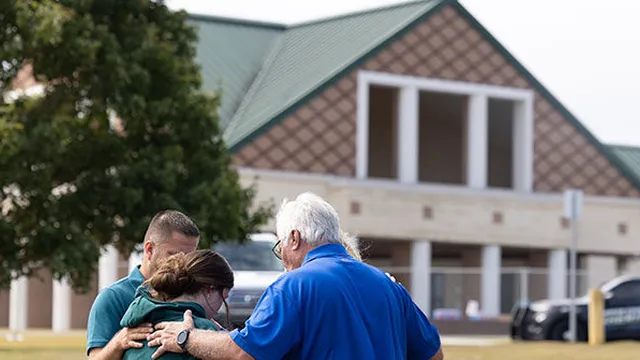
Majority of U.S. adults back religious chaplains in public schools
2025-06-29 07:00- About 60% of U.S. adults support the provision of support services by religious chaplains in public schools.
- Most Americans are against teacher-led prayer and mandatory prayer periods in public schools.
- The divide in opinions reflects ongoing tensions regarding the role of religion in public education and influences legislation.
Express your sentiment!
Insights
In the United States, public opinion regarding the inclusion of religion in public schools remains a contentious issue, evidenced by recent polls showing varying levels of support for religious chaplains and teacher-led prayer. A poll indicated that approximately 60% of U.S. adults favor allowing religious chaplains to offer support services for students in public schools, suggesting a shift towards integrating spiritual guidance within educational institutions. However, many Americans remain opposed to the idea of teacher-led prayer or mandatory school prayer periods, showcasing a fundamental divide in opinions based on political and religious affiliations. Recent legislative efforts in various states reflect this divide, with Republicans generally supporting the inclusion of religious practices, while Democrats veil their opposition to teacher-led prayer. This polarization is exemplified by conflicting laws and rulings surrounding prayer in schools, including a notable Supreme Court decision preventing the establishment of a publicly funded Catholic charter school in Oklahoma. The court's decision signifies the ongoing struggle to balance religious freedom with constitutional limitations, further complicating the push for or against religious involvement in education. The debate extends to the concept of tax-funded charter schools, with a majority of Americans opposing the notion of religious schools receiving public funding. This reflects a broader hesitance towards endorsing religious education in taxpayer-supported institutions, even as some groups express support for educational vouchers that might indirectly facilitate such practices. This division indicates that while the cultural landscape appears to be shifting, significant resistance to fully integrating religious doctrines into public education remains prevalent. As legal battles persist concerning these issues, the necessity for clear policies about the role of religion in public schools is increasingly apparent. The current climate exemplifies deep-seated tensions that continue to frame discussions over the future of educational practices in relation to religious values, reflecting broader societal debates on the intersection of faith and public policy.
Contexts
In the United States, the topic of teacher-led prayer in public schools has been a contentious issue, drawing attention from educators, legal scholars, and policymakers. The U.S. Supreme Court has established the legal framework governing prayer in schools, particularly with decisions like Engel v. Vitale (1962) and Wallace v. Jaffree (1985). These rulings have reinforced the principle of separation of church and state, declaring that government institutions, including public schools, must not endorse or promote religious activities. As a result, any form of organized prayer led by teachers during school hours has been deemed unconstitutional, raising questions regarding the balance between students' rights to religious expression and the establishment clause of the First Amendment. Despite these legal precedents, discussions around teacher-led prayer have persisted in various states, reflecting a desire among some communities to reintroduce religious practices into the public school system. Advocates argue that such practices foster a sense of moral development and community among students. However, opponents contend that allowing teacher-led prayer infringes on the rights of non-religious students and those who practice different faiths, creating an environment that could lead to exclusion or coercion. Additionally, the potential for litigation surrounding these practices adds another layer of complexity, as schools may face legal challenges from individuals or organizations advocating for secular education. The debate also highlights broader societal trends regarding religion's role in public life. In recent years, some states have moved to introduce or support legislation aimed at explicitly permitting or encouraging student-initiated prayer or religious expression in schools. These legislative efforts often frame the issue as one of individual rights, arguing that students should be able to express their religious beliefs freely. However, legal experts warn that such measures may still clash with established legal precedents, potentially resulting in further court challenges and judicial scrutiny. As discussions continue, the impact of teacher-led prayer legislation on students, educators, and the education system as a whole remains to be seen. There is a need for a careful examination of the implications of any changes to laws governing prayer in public schools. Policymakers must navigate the delicate balance between respecting religious beliefs and ensuring that public education remains inclusive for all students, regardless of their backgrounds. Ultimately, the conversation about teacher-led prayer in U.S. schools is likely to evolve, shaped by ongoing societal attitudes toward religion, the law, and the fundamental objectives of education.